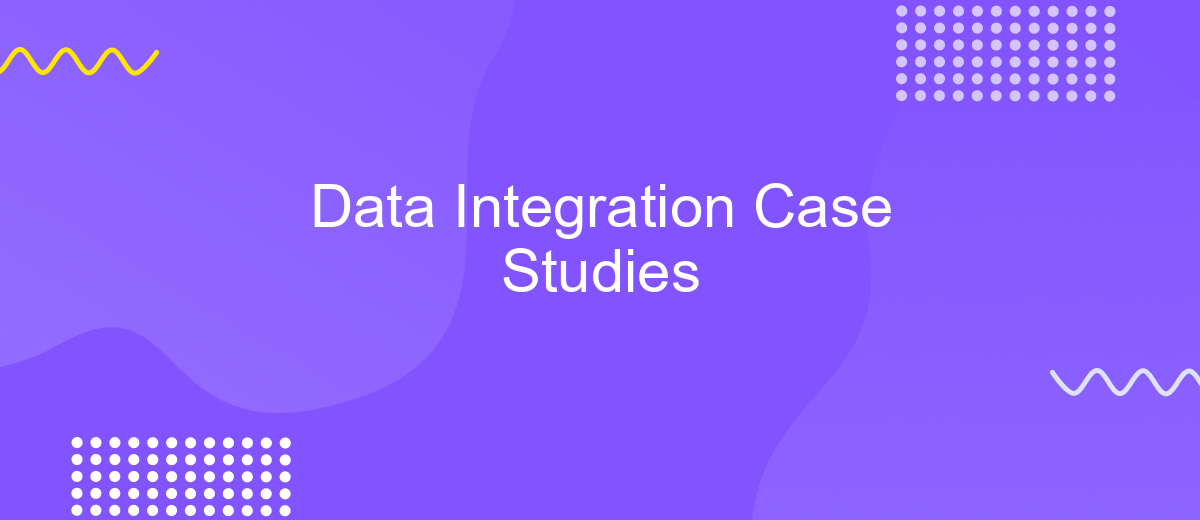Data Integration Case Studies
Data integration is a critical process for organizations aiming to harness the full potential of their disparate data sources. In this article, we explore various case studies that highlight successful data integration strategies. These real-world examples demonstrate how businesses across different sectors have effectively combined data to drive insights, improve decision-making, and achieve operational excellence.
Data Integration Case Study Overview
Data integration is a critical process for organizations aiming to consolidate information from various sources into a unified view. This case study explores real-world examples where businesses have successfully implemented data integration solutions to enhance decision-making, optimize operations, and drive innovation.
- Company A: Streamlined their supply chain management by integrating data from multiple vendors, resulting in a 20% reduction in operational costs.
- Company B: Enhanced customer insights by merging CRM data with social media analytics, leading to a 15% increase in customer satisfaction.
- Company C: Improved regulatory compliance by consolidating financial data from disparate systems, reducing audit times by 30%.
These case studies demonstrate the transformative power of data integration. By effectively combining data from diverse sources, organizations can gain a comprehensive understanding of their operations, identify new opportunities, and respond more agilely to market changes. The success stories of these companies highlight the tangible benefits that can be achieved through strategic data integration initiatives.
Technical Implementation

To achieve seamless data integration, we implemented a robust technical framework that leverages modern APIs and middleware solutions. We began by identifying key data sources and endpoints, ensuring that each system could communicate effectively. Using RESTful APIs, we established secure and efficient data transfer protocols, which allowed us to synchronize data in real-time. Additionally, we utilized ETL (Extract, Transform, Load) processes to clean and format data, ensuring consistency across all integrated platforms.
One of the pivotal tools in our implementation was ApiX-Drive, a versatile service that automates data workflows between various applications. ApiX-Drive enabled us to set up integrations without extensive coding, reducing development time and minimizing errors. By configuring triggers and actions within ApiX-Drive, we ensured that data flows were automated and monitored, providing real-time updates and alerts. This approach not only enhanced data accuracy but also streamlined our operations, allowing us to focus on data analysis and decision-making.
Business Impact

Data integration has become a crucial element for businesses aiming to streamline operations and enhance decision-making processes. By integrating data from various sources, organizations can achieve a unified view of their operations, leading to improved efficiency and more informed strategic planning.
- Enhanced Decision-Making: Unified data allows for comprehensive analysis, leading to better and faster decision-making.
- Operational Efficiency: Streamlined data processes reduce redundancy and minimize errors, saving time and resources.
- Customer Insights: Integrated data provides a 360-degree view of customers, enabling personalized marketing and improved customer service.
- Compliance and Risk Management: Consolidated data ensures that regulatory requirements are met and potential risks are identified and mitigated promptly.
Overall, the implementation of data integration strategies significantly boosts business performance. Companies can leverage integrated data to gain competitive advantages, drive innovation, and ultimately achieve their business objectives more effectively. The case studies illustrate how different organizations have harnessed the power of data integration to transform their operations and achieve measurable business outcomes.
Challenges and Solutions

Data integration projects often encounter several challenges that can impede progress and affect outcomes. One common issue is data inconsistency, where disparate data sources have conflicting or duplicate information. This can lead to inaccurate analytics and misguided business decisions. Another challenge is data silos, which prevent seamless data flow across departments, limiting comprehensive insights.
To address these challenges, organizations can implement various solutions. Data inconsistency can be tackled through data cleansing and validation processes, ensuring that the data is accurate and reliable. Breaking down data silos requires the integration of a centralized data platform that allows for real-time data sharing and collaboration across departments.
- Data Cleansing: Remove duplicates and correct inconsistencies to ensure data accuracy.
- Centralized Data Platform: Implement a unified system to facilitate data sharing and collaboration.
- Data Governance: Establish policies and procedures for data management to maintain data quality.
- Staff Training: Educate employees on the importance of data integrity and proper data handling practices.
By addressing these challenges with targeted solutions, organizations can streamline their data integration processes, leading to more accurate insights and better decision-making. Consistent data management practices and robust integration frameworks are key to overcoming these obstacles.
Conclusion and Recommendations
In conclusion, the case studies on data integration demonstrate the critical role of seamless data flow across various systems in achieving operational efficiency and strategic insights. The successful implementations highlight the importance of selecting the right tools and technologies that align with an organization's specific needs and objectives. Leveraging platforms like ApiX-Drive can significantly streamline the integration process, offering robust solutions for connecting disparate systems without extensive coding knowledge.
Recommendations for future projects include conducting thorough needs assessments to identify integration requirements and potential challenges. Investing in scalable and flexible integration solutions like ApiX-Drive can facilitate smoother transitions and ongoing adaptability as business needs evolve. Additionally, continuous monitoring and optimization of data flows ensure that the integrations remain efficient and effective, providing sustained value over time. By prioritizing strategic planning and leveraging advanced integration tools, organizations can maximize the benefits of their data assets.
FAQ
What is data integration and why is it important?
What are common challenges faced in data integration projects?
How can businesses ensure data quality during integration?
What role do APIs play in data integration?
What tools or services can help automate and manage data integration processes?
Time is the most valuable resource in today's business realities. By eliminating the routine from work processes, you will get more opportunities to implement the most daring plans and ideas. Choose – you can continue to waste time, money and nerves on inefficient solutions, or you can use ApiX-Drive, automating work processes and achieving results with minimal investment of money, effort and human resources.

